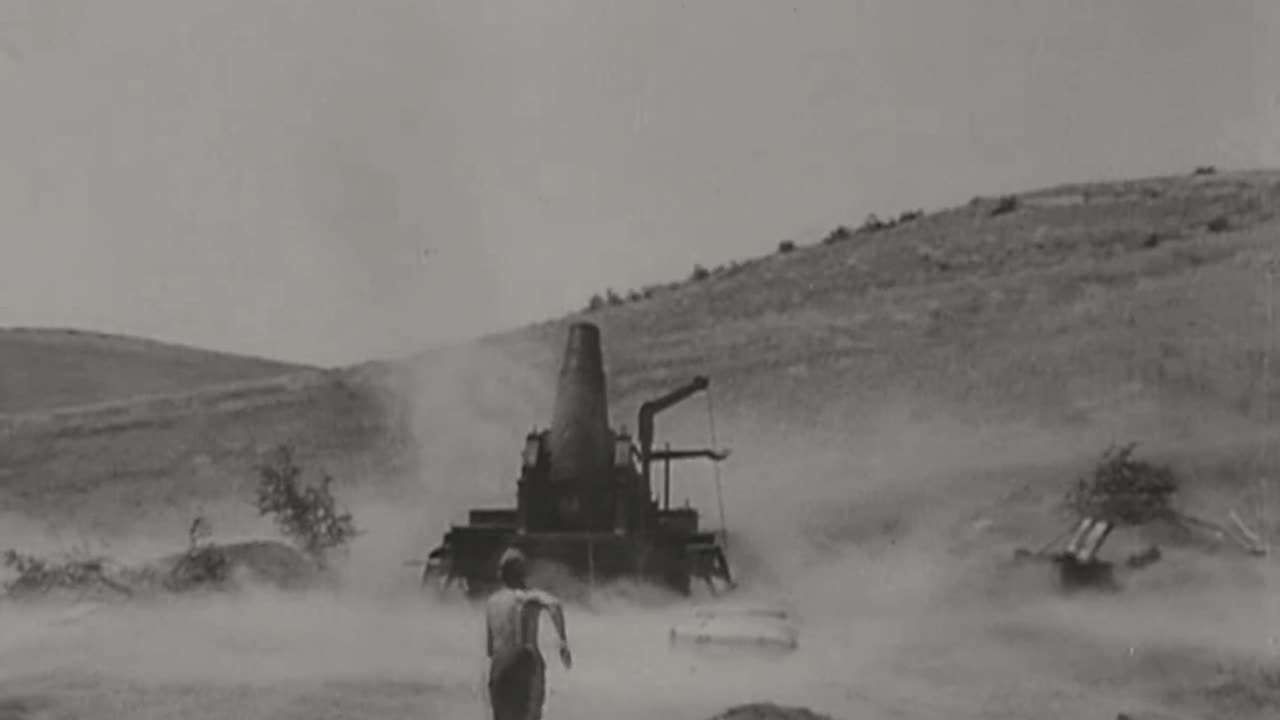WWI-vintage 28cm Haubitze L/12 siege howitzer engages Soviet fortifications in Sevastopol in 1942
The 28cm Haubitze L/12 in Mittelpivotlafette C/92 was a design of the late 19th century initially intended for coastal defense. The theory of operation was a low-velocity howitzer firing a large shell at a high-angle was more likely to destroy an enemy ship by penetrating its thin deck armor than a high-velocity low-angle gun attempting to penetrate its thicker belt armor. The downside was that high-angle fire was harder to aim correctly so more howitzers would be needed to defend an area from attack. However, if the area was constrained by geography like a port at the mouth of a river the navigation channels could be measured ahead of time and firing ranges calculated.
In the coastal defense role it was mounted on a large geared circular base that was set in concrete. There was also a 60 mm thick armored dome to protect the gun crew. Recoil forces were absorbed by a combination of the gun cradle moving up an inclined plane and two hydro-pneumatic or hydro-spring recuperator cylinders, one on each side of the carriage. It fired a 215-345kg high-explosive shell to a range of 10.4km and was capable of penetrating 100mm of deck armor at an angle of 63° at 9.9km. The guns had an early form of the Krupp sliding block breech and used separate loading bagged charge and projectiles.
In the siege howitzer role it could be broken down into four loads, the barrel, cradle, turntable and firing platform, each carried by a three-axle trailer. It was mounted on a turntable which was fixed to a wooden firing platform and required three to four days to emplace for firing. An ammunition crane was fixed to the carriage for ease of loading.
If you would like to support the channel consider visiting https://www.buymeacoffee.com/hw97karbine
-
0/2000
-
big bad powerful gun.
1 like
-
 0:42
0:42
hw97karbine
22 hours agoBritish troops stage some action shots with a pair of knocked out Panzer IVs near Salerno in 1943
14 -
 48:12
48:12
BonginoReport
4 hours agoTX AG Paxton Joins Hayley, Has Sights Set on Senate Seat - Nightly Scroll w/Hayley Caronia (Ep.29)
52.1K45 -
 37:56
37:56
Michael Franzese
3 hours agoThe Man Who Invented the Mafia: Lucky Luciano
28.1K8 -
 1:39:52
1:39:52
AirCondaTv Gaming
2 hours agoRed Alert 3: Uprising - This Command has an Uprising on Alert Pt. 2
5051 -
 14:49
14:49
BEK TV
22 hours agoEP 7 - DUNSEITH DECLASSIFIED: ALLEGED ATTEMPTED MURDER VICTIM ADDRESSES “LOVE TRIANGLE” RUMOR
5.53K2 -
 LIVE
LIVE
LIVE WITH CHRIS'WORLD
3 hours agoLIVE WITH CHRIS'WORLD - AGAIN ON A THURSDAY?! LETS GO!
156 watching -
 LIVE
LIVE
VOPUSARADIO
4 days agoPOLITI-SHOCK! "Exposing Election Theft & Money Laundering"
40 watching -
 LIVE
LIVE
Badlands Media
18 hours agoQuite Frankly Ep. 3: The Gilded Age, Cabbage Patch Kids, Sleep Walking, More ft. Cultivate Elevate 4/17/25
1,136 watching -
 54:41
54:41
LFA TV
9 hours agoKilmar Abrego Garcia: Democrat Poster Child and MS-13 Terrorist | TRUMPET DAILY 4.17.25 7PM
15.1K3 -
 LIVE
LIVE
Mally_Mouse
5 hours agoLet's Hang!! - New Goals + Dressin Up!
132 watching

1 Comment